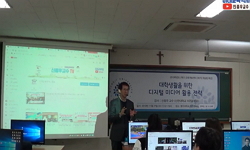This study attempted to derive effective support measures by analyzing the patterns of college students' engagement in online learning and exploring variables that affect them. In addition, by verifying the relationship between college students' onlin...
http://chineseinput.net/에서 pinyin(병음)방식으로 중국어를 변환할 수 있습니다.
변환된 중국어를 복사하여 사용하시면 됩니다.
- 中文 을 입력하시려면 zhongwen을 입력하시고 space를누르시면됩니다.
- 北京 을 입력하시려면 beijing을 입력하시고 space를 누르시면 됩니다.

대학생의 온라인 학습참여 유형에 따른 성과 분석 - 일반대학과 전문대학 비교를 중심으로 – = Analysis of the Types and Educational Outcomes of College Students' Engagement in Online Learning
한글로보기https://www.riss.kr/link?id=A109503788
- 저자
- 발행기관
- 학술지명
- 권호사항
-
발행연도
2024
-
작성언어
Korean
-
주제어
Educational outcomes ; college students ; Latent profile ; student engagement ; NASEL ; 교육 성과 ; 대학생 ; 잠재프로파일 ; 학습참여 ; NASEL
-
등재정보
KCI등재
-
자료형태
학술저널
-
수록면
107-137(31쪽)
- DOI식별코드
- 제공처
-
0
상세조회 -
0
다운로드
부가정보
다국어 초록 (Multilingual Abstract)
As a result of the analysis, the types of learning participation in universities were classified into 'passive', 'intermediate', 'personal', and 'active'. College was analyzed into four types: 'passive', 'intermediate', 'thinking oriented-low interaction', and 'active'. As variables affecting the classification of college students' learning engagement types, student gender, parents' educational background, self-assessment of learning ability, career decision timing, and online learning support at universities have increased the likelihood that they belong to the high level of learning engagement in common with general universities and junior colleges. As a result of verifying the difference by type of learning engagement, it was found that the higher the overall level of learning engagement in general universities and junior colleges, the higher the level of student competency and the higher the level of competency improvement through university education. Based on the research results, it is necessary to seek effective and systematic support measures to promote active learning engagement of university students through customized support according to the type of learning engagement in the increasingly expanding university's non-face-to-face learning environment.
This study attempted to derive effective support measures by analyzing the patterns of college students' engagement in online learning and exploring variables that affect them. In addition, by verifying the relationship between college students' online learning engagement type and educational outcomes, we intend to promote active learning engagement and further present educational implications for improving educational outcomes. For this, NASEL 2nd cycle data (university = 11,863 students, college= 960 students) were used, and latent profile analysis, R3STEP, and DE3STEP analysis methods were used.
As a result of the analysis, the types of learning participation in universities were classified into 'passive', 'intermediate', 'personal', and 'active'. College was analyzed into four types: 'passive', 'intermediate', 'thinking oriented-low interaction', and 'active'. As variables affecting the classification of college students' learning engagement types, student gender, parents' educational background, self-assessment of learning ability, career decision timing, and online learning support at universities have increased the likelihood that they belong to the high level of learning engagement in common with general universities and junior colleges. As a result of verifying the difference by type of learning engagement, it was found that the higher the overall level of learning engagement in general universities and junior colleges, the higher the level of student competency and the higher the level of competency improvement through university education. Based on the research results, it is necessary to seek effective and systematic support measures to promote active learning engagement of university students through customized support according to the type of learning engagement in the increasingly expanding university's non-face-to-face learning environment.
동일학술지(권/호) 다른 논문
-
- (사)한국대학교육협의회
- 황영식
- 2024
- KCI등재
-
대학 성과지표 및 KPI 개발과 차등 가중치를 반영한 평가 모형 제시: Rasch 모형 및 Extended-Angoff 적용 중심으로
- (사)한국대학교육협의회
- 나은창
- 2024
- KCI등재
-
고등학교 유형별 대학생의 학생성공 차이 분석: K대학교 사례를 중심으로
- (사)한국대학교육협의회
- 정해일
- 2024
- KCI등재
-
국내 대학생 대상 플립러닝 적용 수업의 효과에 관한 메타분석
- (사)한국대학교육협의회
- 엄미리
- 2024
- KCI등재




 KCI
KCI






